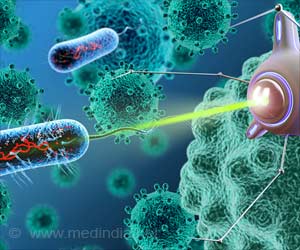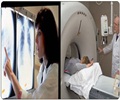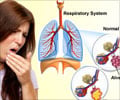Quantum dots, (a type of semiconductor nanoparticle) derived from tea leaves extract were found to inhibit the growth of lung cancer cells in a recent study.
- Current study was testing the ability to produce quantum dots in a non-toxic and safe manner using tea leaf extract.
- The test was successful and interestingly, the quantum dots produced from tea leaves were additionally found to suppress and destroy lung tumor cells.
- Quantum dots (a type of nanoparticle) have potentially numerous applications in science and medicine such as tumor imaging and targeted drug delivery.
Details of Study – Producing Non-toxic Quantum Dots and Added Surprise Finding
Normally quantum dots are produced chemically, however the process is complicated and quite expensive in addition to be having undesirable toxic effects.As stated previously, to overcome the above limitations the Swansea team were experimenting a less toxic and safer method of producing quantum dots.
- For this the study team used tea leaves extract to try and produce quantum dots in a non-toxic manner.
- Tea leaves contain several compounds, such as polyphenols, amino acids, vitamins and antioxidants. The scientists mixed tea leaf extract with cadmium sulphate (CdSO4) and sodium sulphide (Na2S) and left the mixture to incubate, a process which aids in the formation of quantum dots successfully.
- The study confirmed the results of previous research in the field that showed tea leaves to be a safe cheap and simple way of producing quantum dots for various applications.
- Quantum dots derived from tea leaves Suppress the growth of lung cancer cells. They penetrated into the very tiny nanopores of the cancer cells and destroyed up to 80% of them.
Dr Sudhagar Pitchaimuthu of Swansea University, lead researcher on the project, and a Ser Cymru-II Rising Star Fellow, said. "Our research confirmed previous evidence that tea leaf extract can be a non-toxic alternative to making quantum dots using chemicals." The real surprise, however, was that the dots actively inhibited the growth of the lung cancer cells. We hadn't been expecting this.
- The quantum dots derived from tea leaf extract also showed exceptional fluorescence in cancer cell bioimaging compared to conventional chemically derived nanoparticles.
What are Quantum Dots (QD) and Their Uses?
Quantum dots (QDs) are semiconductor nano-particles, with several unique properties and interesting phenomena, such as size dependent emission wavelength, broad excitation range and narrow emission peak. These are tiny particles measuring less than 10 nanometres. In comparison, human hair is 40,000 nanometres thick.The basic difference between quantum dots and nanoparticles is that quantum dots are semiconductor material but nanoparticles are metallic in nature. The physical nature of quantum dots confers several unique properties that make them superior to conventional nanoparticles.
Due to their highly tunable properties, quantum dots have evoked a lot of interest and have several potential applications including solar cells, transistors, LEDs, diode lasers and second-harmonic, medical imaging and quantum computing.
Scope of Research and Future Plans
- The team plan to expand on the current research and plan to investigate the role of tea leaf extract in cancer cell imaging, and study the quantum dots and the cancer cell interface.
- They hope to set up a quantum dot (QD) factory to explore various possible applications of these particles.
Reference:
- Nanoparticles derived from tea leaves destroy lung cancer cells - (https://phys.org/news/2018-05-nanoparticles-derived-tea-lung-cancer.html)
Source-Medindia
















